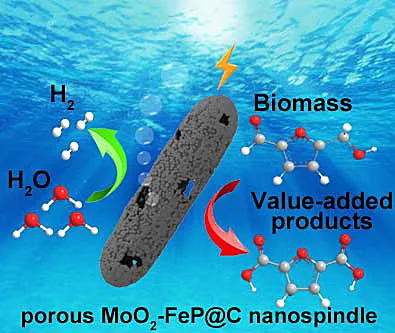[Catalysis] MoO2-FeP heterojunction interface design for efficient hydrogen production and biomass oxidation
QQ Academic Group: 1092348845
Detailed
The use of low-voltage "abandoned electricity" for intermittent energy conversion such as solar energy and wind energy for electrocatalytic water splitting to produce hydrogen has attracted more and more attention. Hydrogen is used as a renewable and efficient clean energy to replace traditional fossil fuels. Water decomposition includes two half reactions: cathode hydrogen evolution reaction (HER) and anode oxygen evolution reaction (OER). Compared with HER, OER has a complicated reaction process and slow kinetics, which is the main bottleneck that limits the efficiency of electrocatalytic water decomposition. In addition, OER product O2 is not a high value-added product. In order to achieve the demand for sustainable clean energy development, a more meaningful oxidation reaction is urgently needed to replace the anode OER with the cathode HER pairing. Biomass is an organic green energy source with alcohol or aldehyde as the main component. It has the advantages of low pollution, wide distribution, rich reserves, and carbon neutrality. It is considered to be one of the most promising sustainable energy sources. Studies have shown that biomass electro-oxidation (BEOR) tends to exhibit better reaction kinetics than OER, and its oxidation products (such as carboxylic compounds) have important applications in food, polymers, and pharmaceuticals. Therefore, it is very meaningful to couple and pair HER with BEOR and use efficient catalysts to synchronize low-pressure catalytic hydrogen production and high value-added chemical synthesis, but this is still a challenge.
Recently, the research group of Professor Honggang Fu of Heilongjiang University borrowed POMOF‘s synthesis strategy, and used nano-spindle-type iron oxyhydroxide (FeOOH) as a self-sacrifice substrate. He added heteropoly acid (PMo12) and organic ligands to form in situ on FeOOH Mo-Fe organic complexes were successfully prepared porous carbon-coated MoO2-FeP heterojunction (MoO2-FeP @ C) catalysts through controlled phosphation. The synthesized MoO2-FeP @ C has a rich active interface and can efficiently catalyze HER and BEOR simultaneously. XPS analysis and theoretical calculations confirmed the electron transfer of MoO2 to FeP at the interface. The electron accumulation on FeP helps to optimize the H2O and H * adsorption energies of HER, while the hole accumulation on MoO2 helps to improve the BEOR activity.
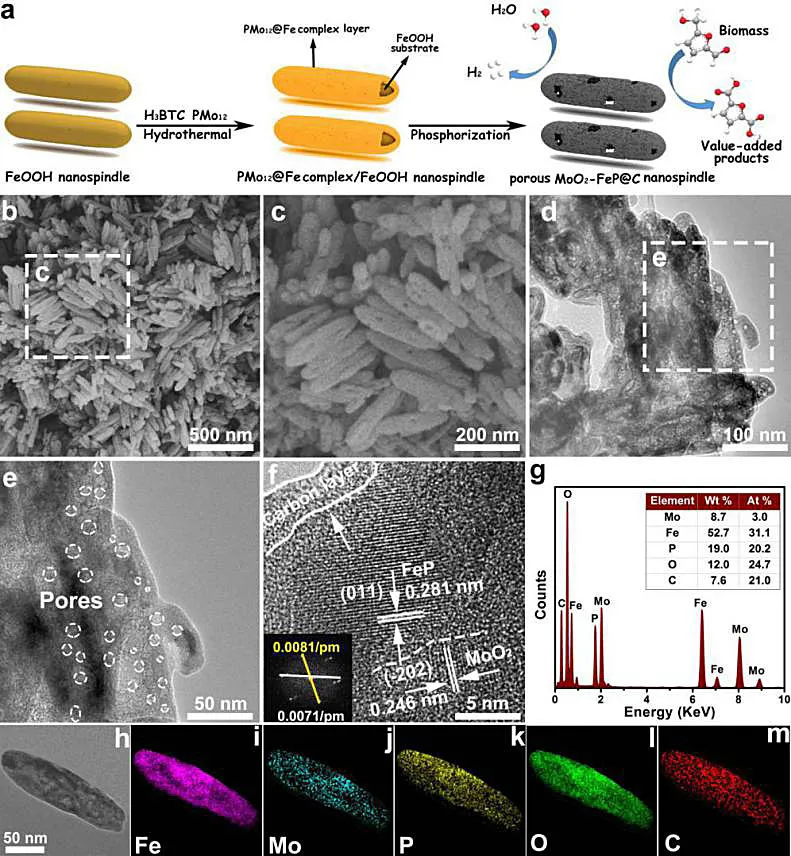
Figure 1. Design scheme and SEM and TEM characterization of MoO2-FeP @ C catalyst
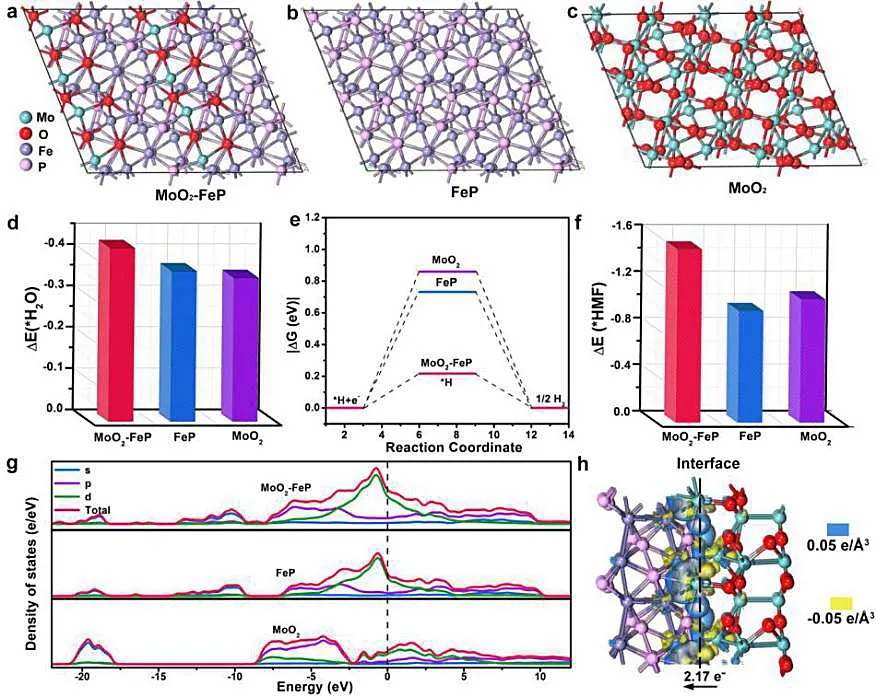
Figure 2. Density functional calculation of MoO2-FeP
Thanks to its special interface electronic structure, MoO2-FeP @ C exhibits excellent HER activity, with an overpotential of 10 mV at 10 mA cm-2 and a slope of Tafel of 48 mV dec-1. At the same time, when 5-hydroxymethylfurfural (HMF) was selected as the biomass of BEOR, its conversion rate was almost 100%, and the yield of selective synthesis of 2,5-furandicarboxylic acid (FDCA) was 98.6%, and showed Outstanding HMF electro-oxidation cycle stability.
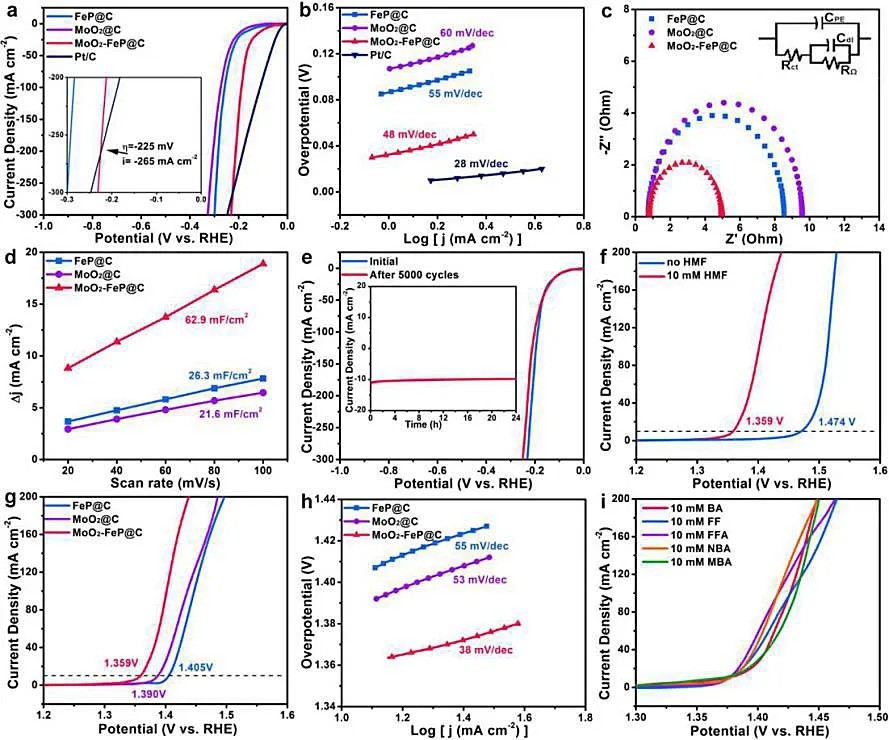
Figure 3. Electrochemical properties of MoO2-FeP @ C
Since the catalyst components of the yin and yang are the same, the operation is simple and easy to assemble to realize simultaneous hydrogen evolution and biomass electro-oxidation. Using MoO2-FeP @ C to achieve cathode production of H2 and anode synthesis. High additional FDCA electrolyzer requires only 1.486 V to obtain a current of 10 mA cm-2, and the electrolysis can be driven by a solar cell system with an output voltage of 1.45 V, indicating that the The potential of catalysts to convert intermittent energy sources such as solar energy. In addition, MoO2-FeP @ C catalyzed other biomass oxidation reactions and HER coupling showed excellent catalytic performance, indicating its good universality.
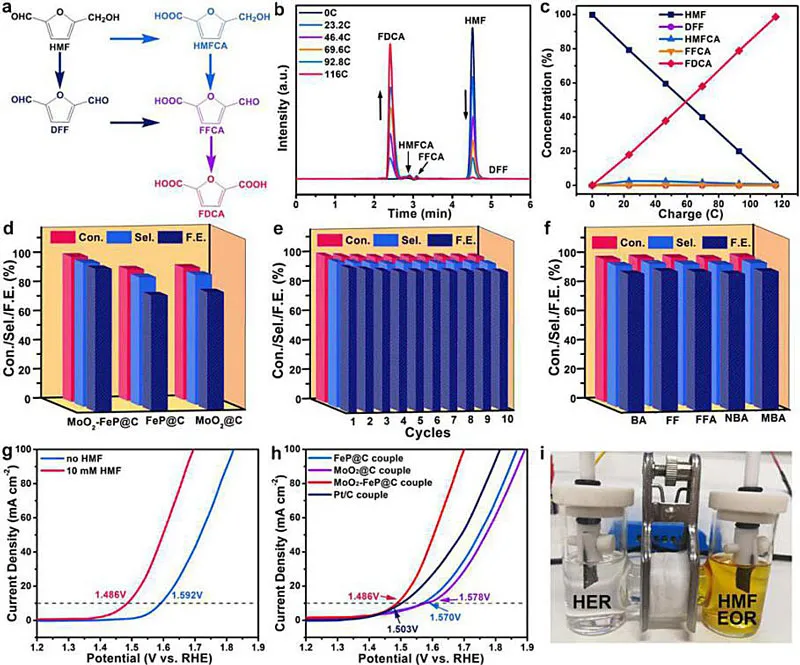
Figure 4. MoO2-FeP @ C electrocatalytic biomass oxidation performance and electrochemical performance when composed of two electrodes
The results of this research were recently published in the journal Advanced Materials. This article was supported by the Ministry of Science and Technology‘s key research and development plan (2018YFB1502401) and the National Natural Science Foundation of China (21631004, 21805073, 21601055, 21571054). Co-corresponding author, Heilongjiang University is the sole correspondent for the dissertation.
Interfacial Engineering of MoO2-FeP Heterojunction for Highly Efficient Hydrogen Evolution Coupled with Biomass Electrooxidation
Ganceng Yang, Yanqing Jiao, Haijing Yan, * Ying Xie, Aiping Wu, Xue Dong, Dezheng Guo, Chungui Tian, Honggang Fu *
Adv. Mater., 2020, DOI: 10.1002 / adma.202000455
Source: X-MOL Information
Recently, the research group of Professor Honggang Fu of Heilongjiang University borrowed POMOF‘s synthesis strategy, and used nano-spindle-type iron oxyhydroxide (FeOOH) as a self-sacrifice substrate. He added heteropoly acid (PMo12) and organic ligands to form in situ on FeOOH Mo-Fe organic complexes were successfully prepared porous carbon-coated MoO2-FeP heterojunction (MoO2-FeP @ C) catalysts through controlled phosphation. The synthesized MoO2-FeP @ C has a rich active interface and can efficiently catalyze HER and BEOR simultaneously. XPS analysis and theoretical calculations confirmed the electron transfer of MoO2 to FeP at the interface. The electron accumulation on FeP helps to optimize the H2O and H * adsorption energies of HER, while the hole accumulation on MoO2 helps to improve the BEOR activity.

Figure 1. Design scheme and SEM and TEM characterization of MoO2-FeP @ C catalyst

Figure 2. Density functional calculation of MoO2-FeP
Thanks to its special interface electronic structure, MoO2-FeP @ C exhibits excellent HER activity, with an overpotential of 10 mV at 10 mA cm-2 and a slope of Tafel of 48 mV dec-1. At the same time, when 5-hydroxymethylfurfural (HMF) was selected as the biomass of BEOR, its conversion rate was almost 100%, and the yield of selective synthesis of 2,5-furandicarboxylic acid (FDCA) was 98.6%, and showed Outstanding HMF electro-oxidation cycle stability.

Figure 3. Electrochemical properties of MoO2-FeP @ C
Since the catalyst components of the yin and yang are the same, the operation is simple and easy to assemble to realize simultaneous hydrogen evolution and biomass electro-oxidation. Using MoO2-FeP @ C to achieve cathode production of H2 and anode synthesis. High additional FDCA electrolyzer requires only 1.486 V to obtain a current of 10 mA cm-2, and the electrolysis can be driven by a solar cell system with an output voltage of 1.45 V, indicating that the The potential of catalysts to convert intermittent energy sources such as solar energy. In addition, MoO2-FeP @ C catalyzed other biomass oxidation reactions and HER coupling showed excellent catalytic performance, indicating its good universality.

Figure 4. MoO2-FeP @ C electrocatalytic biomass oxidation performance and electrochemical performance when composed of two electrodes
The results of this research were recently published in the journal Advanced Materials. This article was supported by the Ministry of Science and Technology‘s key research and development plan (2018YFB1502401) and the National Natural Science Foundation of China (21631004, 21805073, 21601055, 21571054). Co-corresponding author, Heilongjiang University is the sole correspondent for the dissertation.
Interfacial Engineering of MoO2-FeP Heterojunction for Highly Efficient Hydrogen Evolution Coupled with Biomass Electrooxidation
Ganceng Yang, Yanqing Jiao, Haijing Yan, * Ying Xie, Aiping Wu, Xue Dong, Dezheng Guo, Chungui Tian, Honggang Fu *
Adv. Mater., 2020, DOI: 10.1002 / adma.202000455
Source: X-MOL Information
- Previous: A review of Hu Liangbi
- Next: IF 14.1! Immunoregulat


 Academic Frontier
Academic Frontier
